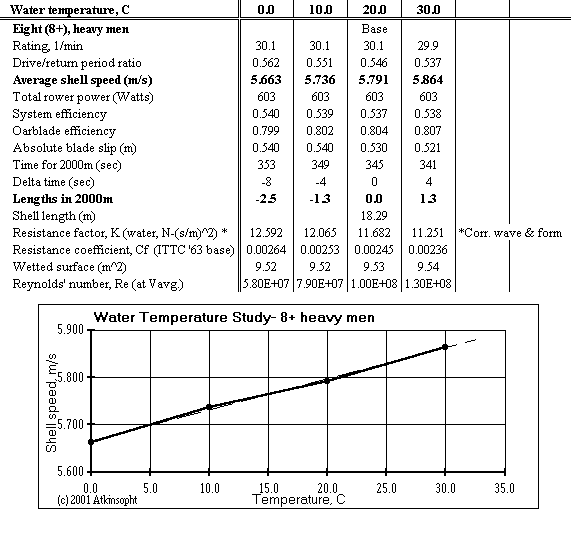
Figure 1, 8+ Heavy Men

With increasing water temperature viscosity decreases faster than density thus increasing Reynolds' number and decreasing the corresponding hull skin friction coefficient, Cf (ITTC '63). Wetted surface increases slightly as the hull sinks lower in the less dense water but not significantly. The blade slip seems to decrease but I think this is owing to a reduction of absolute drive time (oars not as much time in the water). The drive period is reduced by three percent and the absolute slip by five percent. Perhaps there is a better explanation for this.
Remember, too, that warm water is usually associated with warm air and reduced air resistance although this effect is small because air resistance is only about one tenth the water resistance.
The temperature speed increase is sufficient to vitiate test speed results for instrumented shells taken in different conditions unless (surface) temperature is measured and taken into account. Further, temperature effects should be kept in mind when sifting through race results for evidence of the advantage of a new technique or technological improvement.
ROWING might usefully produce a temperature correction table; one for each principle size of shell.
Owing to the fact that temperature affects density (as well as viscosity) it is no surprise that boats go very slightly faster in fresh water than in denser sea water even though the fresh water hull has a larger wetted surface and the oarblade a larger slip.